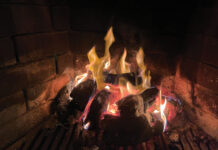GIN as a spirits category is unusual in that there is really only one main stipulation that defines it: juniper berries. Otherwise there is no particular raw material specified for use as the base spirit, no minimum maturation time required, and no major geographical protections dictating where it is made.
Juniper is a coniferous plant and is part of the Cypress or Cupressaceae family. The berries are actually fleshy seed cones that contain resinous and aromatic oil.
The most common variety used in gin production is Juniperus communis (Common Juniper); European Union Regulation (110-2008) explicitly states that all gin sold within the EU must contain this variety, be it macerated, compounded or distilled.
The major regions for harvesting Juniperus communis, which grows wild, include Northern Italy and other areas around the Adriatic Sea, which has a Mediterranean climate. Originally, most of the juniper for British gin was sourced domestically; and some speculate that one of the reasons behind the concentration of the gin industry in London was a ring of juniper bushes that surrounded the Capital. Those bushes were cleared around the time of the Second World War to make way for food production.
Currently, only two gin distilleries from the UK make a point of sourcing their juniper from the UK: Crossbill from Scotland uses local juniper and rosehip, which they harvest and replant as part of a conservation effort for British juniper; and Beckett’s Gin source their juniper from Box Hill, south of London, which forms part of the original juniper ring.
Despite both sources being Juniperus communis, the character of the raw berry and the distillate it produces is different to those from the major Adriatic producers. This is in part due to the UK’s colder weather, which leads to different concentrations of oil within the berries. Distillers compensate for this by using various harvesting and production techniques to achieve the complexity that they want in their gins.
Juniperus communis also grows in the US, but some distillers have started to experiment with a few of the other regional species of juniper.
Juniperus occidentalis
(Western or Sierra Juniper)
This grows in dry, rocky foothills and mountain slopes — in areas such as Sierra Nevada, Oregon and Washington. It grows in a pyramid-like tree up to 20 m in height, with an average berry size of around 8.3 mm. The Corbetti variation grows as a shrub in sandy soil.
Tasting Notes: Juniperus occidentalis Distillate (Oregon)
A nose of straw and vanilla, with hints of pine needles; very green and herbaceous, with a hint of sweet licorice, mint and damp animal hair, which makes it rather unappetizing. The taste is unpleasant: there is an odd, milky creaminess that mixes with some of the sappy, piney flavors. It is also bizarrely sweet and reminds me somewhat of furniture, with aromas of a mix of cedar wood
and varnish.
Juniperus virginana
There are two subtypes of this variety:
Virginiana silicicda
(Southern or Coastal Red Cedar)
This grows on the Florida panhandle and along the East Coast, up to Virginia. Its trees grow up to about 10 m high and have a large canopy. The berries are quick to ripen and are around 4–5 mm in diameter, blue in color, and particularly resinous.
Virginiana virginiana
(Virginia, Red Cedar or Eastern Red Cedar)
Larger than silicicda, these trees grow up to 30 m in height in a pyramid structure, with berries around 6 mm in diameter. This variety grows across the US; as far west as Texas and Nebraska, and north up to the Great Lakes and parts of Canada.
Both berries are known to contain cedrol and act as diuretic when consumed raw.
Tasting Notes: Juniperus virginina silicicda Distillate
Some limestone on the nose, as well as a hint of chalky citrus that opens up to hints of tart stone fruit and nectarine. This is quite a fruity spirit, along with some herbal and spiced notes. Caraway and fennel come through, as well as a touch of green anise, which gives the distillate a slight aquavit-like quality towards the end. The finish has a mild, piney note with a touch of fresh mint.
Experimenting with juniper is exciting and something that I think should be encouraged, but it is by no means an easy option. Harvesting local juniper requires careful inspection of your crop, almost on a berry-by-berry basis, but it can be a great way to capture some of the local terroir in your spirit.
Based on this limited research, it seems that, while juniper varieties other than communis have an interesting character, it is difficult to use them as a like-for-like substitute for common juniper. However, they do have great potential as a botanical to complement the anchor juniper of communis, and I believe that it won’t be long until such a gin is released. n
Many thanks to all who helped with my research for this article—especially the folks at Captive Spirits.








